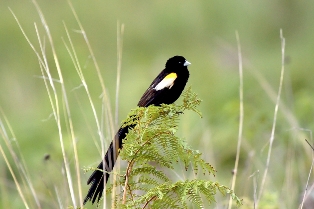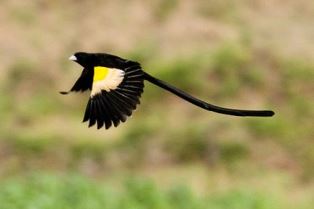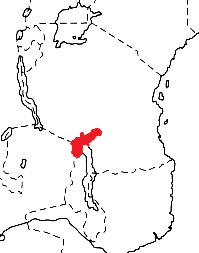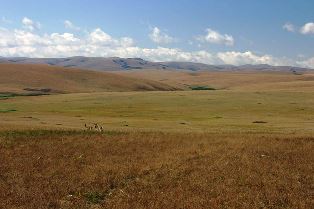Weaver Wednesday [102]: Mountain Marsh Widowbird 2014-05-28 (521)
 Weaver Wednesday
Weaver Wednesday


The Mountain Marsh Widowbird Euplectes psammocromius breeding male is black with a distinctive bright yellow and buff shoulder patch, and long thin tail, which in display flight looks like several tails. It is restricted to highlands, and does not overlap with the similar Hartlaub's Marsh Widowbird E. hartlaubi. The non-breeding male is dull coloured but retains the shoulder patches. The female and sub-adult are much larger and more heavily streaked below than other widowbirds in their range.
The Mountain Marsh Widowbird is restricted to the Nyika Plateau in Zambia and Malawi, and to the highlands of SW Tanzania to Njombe and Iringa, where it is locally common (see map below, based on Birds of Africa). It was formerly treated as a race of Hartlaub's Marsh Widowbird, but its habitat, geographic isolation, and distinct voices separates it into a species.

The Mountain Marsh Widowbird inhabits short, thick, montane grassland usually near streams. It is found in pairs or small groups, but forms large flocks in the non-breeding season.
The Mountain Marsh Widowbird feeds on grass seeds and insects.

The Mountain Marsh Widowbird is territorial and is probably polygynous. The male displays in a slow flight over grasslands, with his long tail conspicuous. The nest is simialr to that of other widowbirds in being a dome-shaped structure of fine grass, and loosely woven with a side entrance. The nest is built with living grass as part of the nest. Clutch size is 2 eggs, which are pale olive-green, and densely marked with very flne brown spots and streaks. Nothing else is known about breeding.
There are no PHOWN records for the Mountain Marsh Widowbird (see PHOWN summary), and many are needed of this species. Submit any weaver nest records to PHOWN (PHOtos of Weaver Nests) via the Virtual Museum upload site.
PHOWN summary
Previous Wedn: Streaked Weaver
Full weaver species list
| 

 Weaver Watch
Weaver Watch


